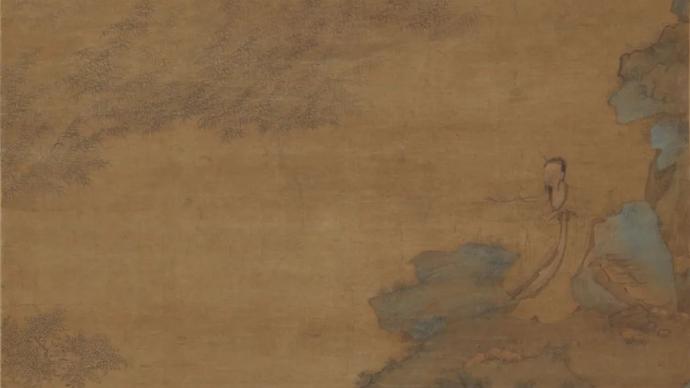
Deng Tuo has a very rich collection of paintings, and his donation of cultural relics has also made a good story.
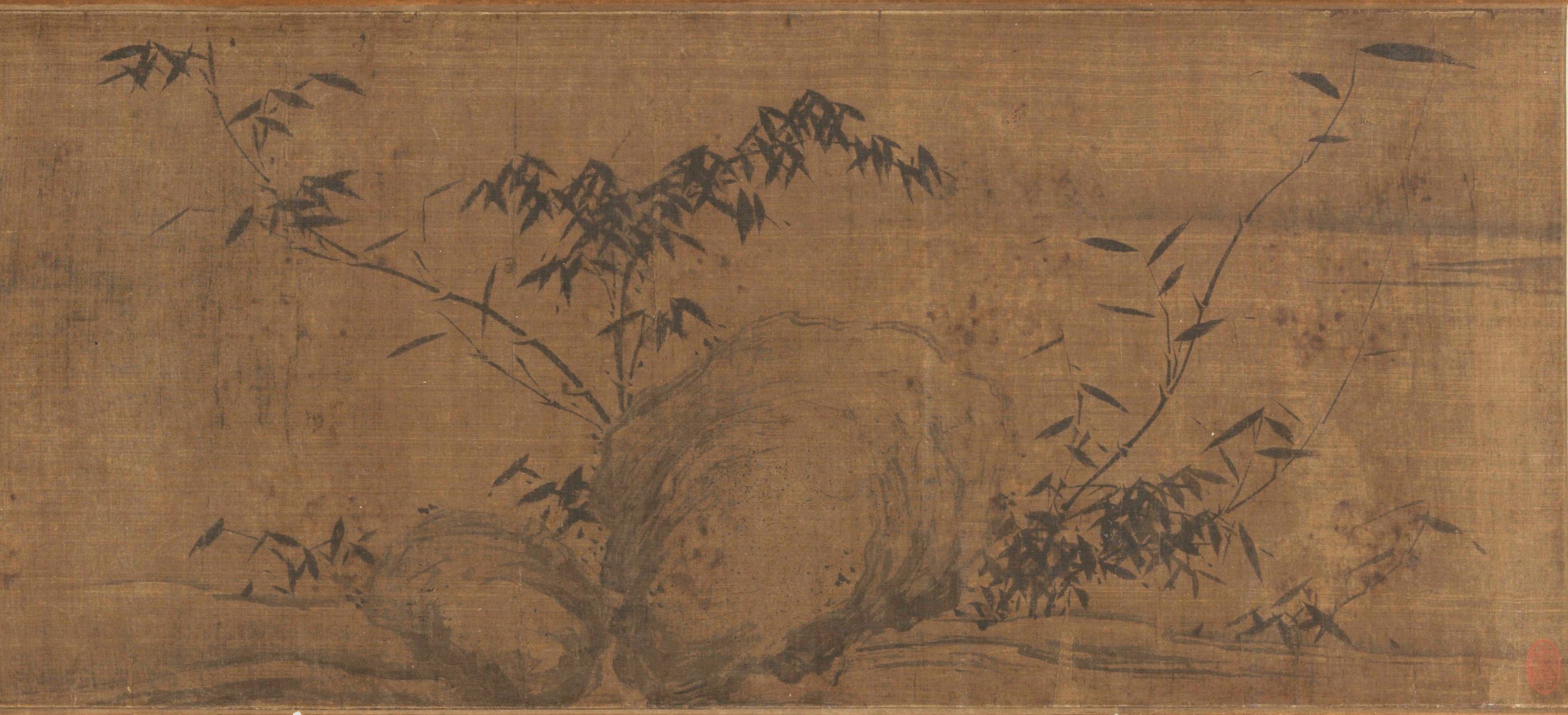
Su Shi's "Bamboo and Stone in Xiaoxiang" (biography) detail

exhibition site
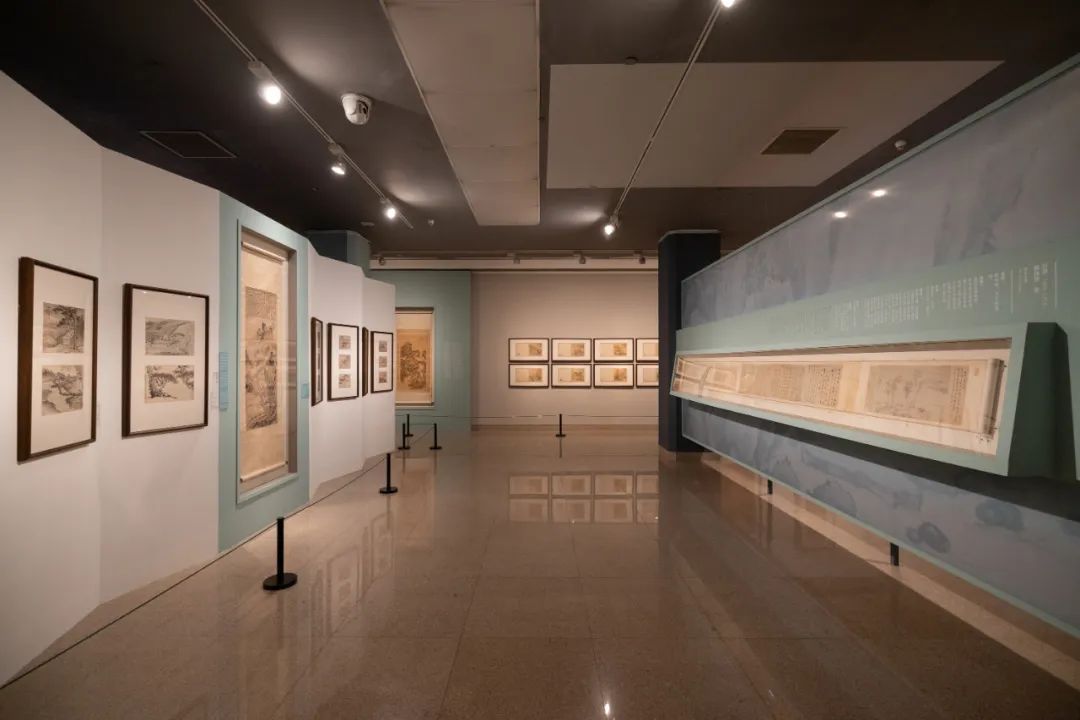
exhibition site
The exhibition selects more than 70 pieces (sets) of fine art donated by Deng Tuo, and focuses on the images of "bamboo and stone" in this batch of donated works. The three major sections of "Changing Tour" show the artistic characteristics and inner spirit of traditional Chinese flower-and-bird painting and landscape painting. Exhibited works include Chen Rong's "Dragon and Clouds", Tang Yin's "Lake and Mountains at a Glance", Qiu Ying's "Picture of Picking Zhi", Wang Yuanqi's "Imitating Huang Gongwang Landscape", Shi Tao's "Landscape (Album Twelve Open)", Zheng Xie's "Orchid and Bamboo Picture" Waiting for a batch of handed down treasures.
"Bamboo and Stone in Xiaoxiang" Song Su Shi (biography) Collection of National Art Museum of China
One of the rarest treasures in the exhibition is Su Shi's "Xiaoxiang Bamboo and Stone Map" (biography), which is known as the treasure of the National Art Museum of China. Deng Tuo said that "he is fortunate to have left ink in the past, and the scroll of Xiaoxiang bamboo and stone is strange". This work is 28 cm in length and 105.6 cm in width, on silk. This work adopts a long scroll composition, showing the confluence of Xixiao and Xiang Er waters in Lingling County, Hunan Province, and the vast scenery of the giant flood in Dongting.The distant mountains, smoke and water, wind and rain and thin bamboo have a distant artistic conception, which is a model of Chinese literati painting that embodies the spiritual feelings of literati in bamboo and stone. On the lower left side of the picture is the inscription and postscript of Yang Yuanxiang, a collector of the Yuan Dynasty. There are also 26 inscriptions and postscripts of Yuan and Ming Dynasty at the end of the painting, with a total of more than 3,000 characters. You year (1561).
Bamboo and stone are very popular in Chinese painting themes and have been prosperous for a long time. Su Shi also prefers the theme of "bamboo and stone", and "Xiaoxiang Bamboo and Stone" is one of his representative works of painting art. Su Shi's paintings were very famous at that time, and there was a scene of "withered wood, bamboo and stone, ten thousand gold competing for sale". However, Su Shi's paintings are mostly found in descriptions, and there are very few authentic works handed down to the world. At present, only the "Xiaoxiang Bamboo and Stone Map" in the National Art Museum of China and the "Su Shi Withered Wood, Bamboo and Stone, and Wen Tong Mozhu" in the Shanghai Museum have been circulated. Fakes also remain controversial. In 2018, another picture of Su Shi's "Withered Tree and Strange Rock" appeared at Christie's auction house, which also caused the industry to dispute its authenticity.
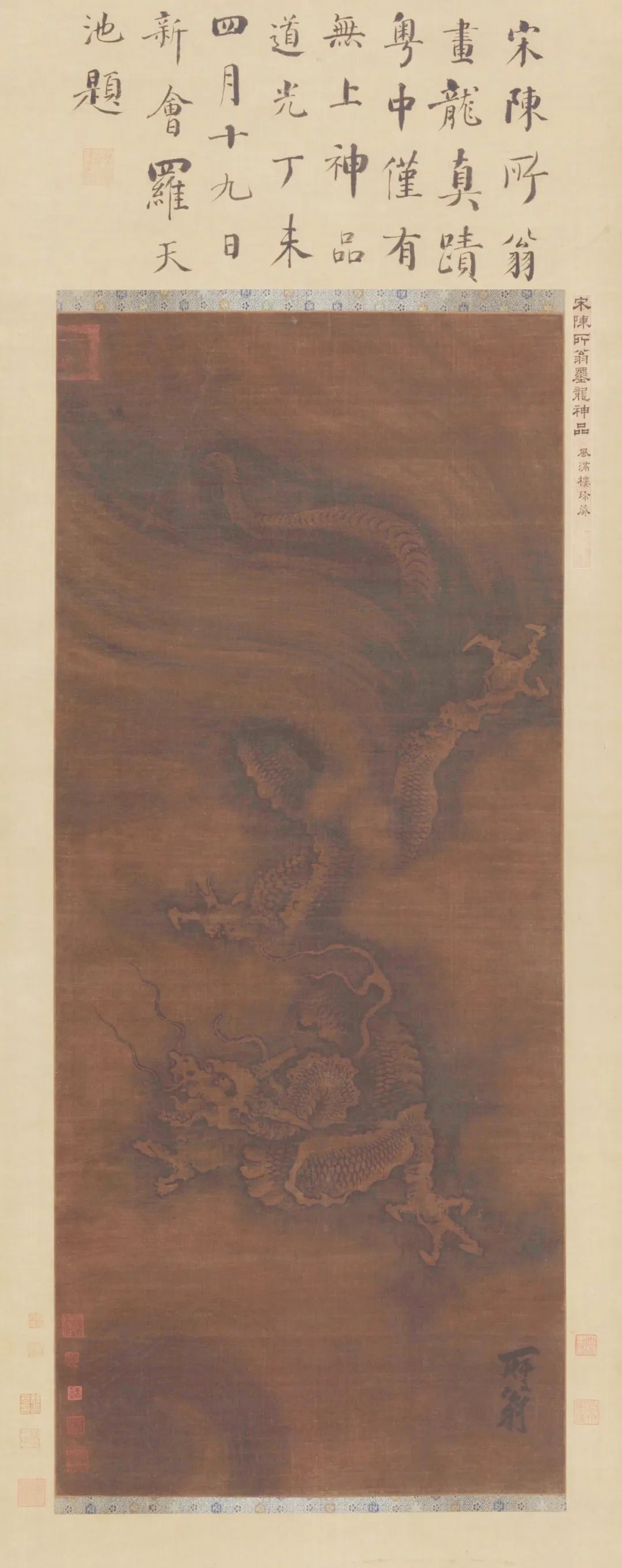
"Cloud Dragon" Chen Rong in the Southern Song Dynasty
Another important Song painting exhibition is the "Cloud Dragon" by Chen Rong, a painter in the Southern Song Dynasty. He painted a dragon soaring in the sky with ink and wash, and the dragon's body was in the shape of an "S" while hovering, which was full of dynamism. The dragon's head is slightly raised, and the beard and hair are swaying. In addition, Tang Yin's "Lakes and Mountains at a Glance" in the Ming Dynasty depicts the scenery of Taihu Lake with "red clouds, gleaming blue waves and flat waves".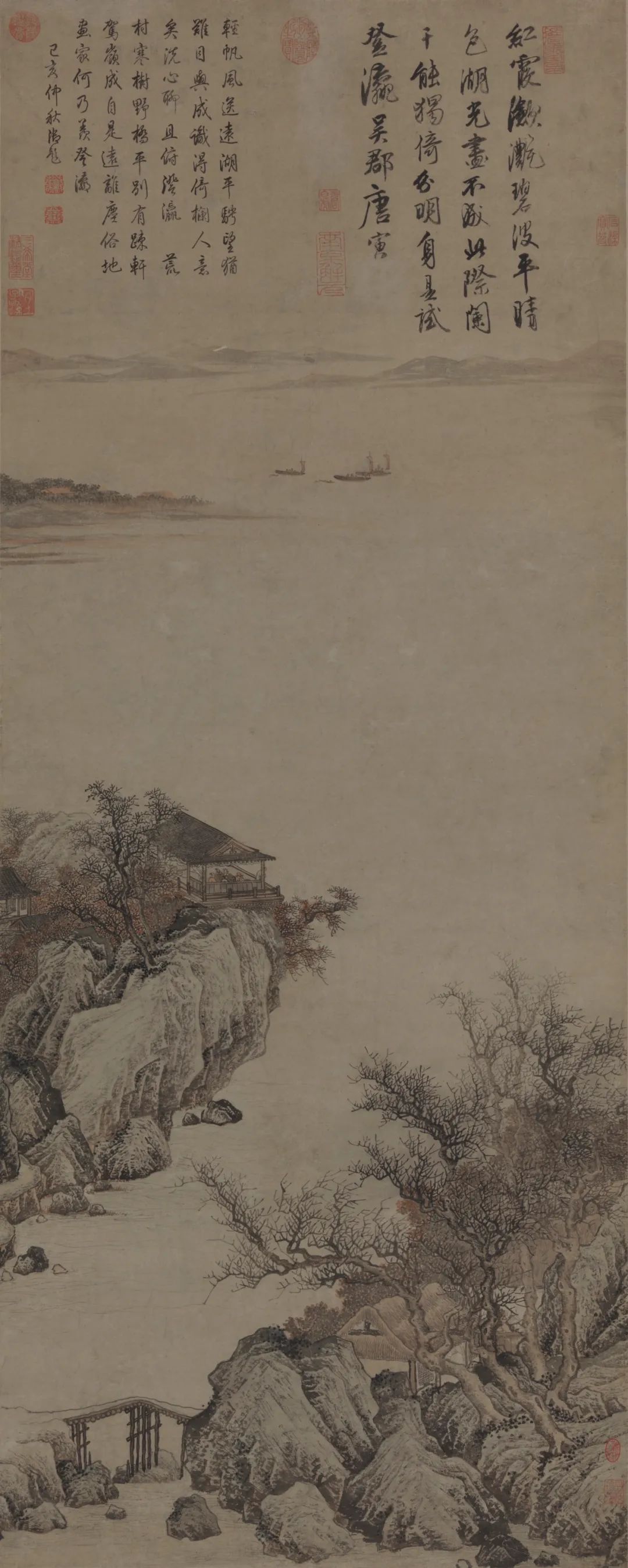
"A List of Lakes and Mountains" by Tang Yin in the Ming Dynasty
Yu Hui, a researcher at the Palace Museum, mentioned that Deng Tuo's collections are mainly works from the Ming and Qing Dynasties, because his income is limited, but for the works of Song and Yuan painters, as long as he sees good works, he accepts them. , because the paintings of Song and Yuan Dynasties are not very common, and there are not many opportunities after all. Whether there is a collection of paintings in the Song and Yuan Dynasties is a comprehensive consideration of a collector's collection ability and collection level. It is precisely because Deng Tuo has collected several paintings from the Song and Yuan Dynasties, together with other masterpieces of the Ming and Qing Dynasties, that his collection is so striking.
Song Anonymous "Yueyang Tower"
Deng Tuo's collection of Song and Yuan paintings includes Su Shi's "Ink Bamboo Picture" in the Northern Song Dynasty, Chen Rong's "Ink Dragon" in the Southern Song Dynasty, the anonymous "Yueyang Tower" in the Song Dynasty, Zhang Yu's "Frost Kexiu Stone Picture" in the Yuan Dynasty, and Huang Gongwang in the Yuan Dynasty. Landscape, Yuan Dynasty, Gao Kegong's "Clouds and Mountains" axis, Yuan Dynasty's "Eagle and Rabbit" and so on. Yu Hui mentioned that some of Deng Tuo’s collections of paintings from the Song and Yuan Dynasties are very important, such as Su Shi’s “Ink Bamboo Picture” in the Northern Song Dynasty. Mr. Yang Renkai believes that this collection is authentic. Of course, some experts and scholars have objections. This discussion will be discussed in the future. will continue. Another example is Chen Rong's "Ink Dragon" in the Southern Song Dynasty. Chen Rong was from Fujian, born in Putian. He also worked as a local official in Fujian, and also worked as a master clerk in Guozijian. painter. Not many of Chen Rong's ink brushes have been passed down to the present. There is one in the Forbidden City, one in the National Art Museum of China, one in the Boston Museum in the United States, and one in the Guangdong Museum, which can be said to be precious. The artistic level of this "Ink Dragon" in Deng Tuo's collection is consistent with the "Ink Dragon" in the Boston Museum of Art, USA, and both are genuine works. In painting ink dragons, there must be hidden dew, and attention should be paid to changes. Generally, the head should be exposed, the body or a few claws should be hidden, and then the tail should be exposed, as if hidden in a cloud. In ancient times, clouds were all rendered by ink. If the number of times of rendering is too many, the picture will easily appear dead. Chen Rong's "Ink Dragon" has solved the contradiction between hiding and revealing, and the contradiction between movement and stillness. It's an excellent work. Later generations of paintings of ink dragons and Chen Rong are rare.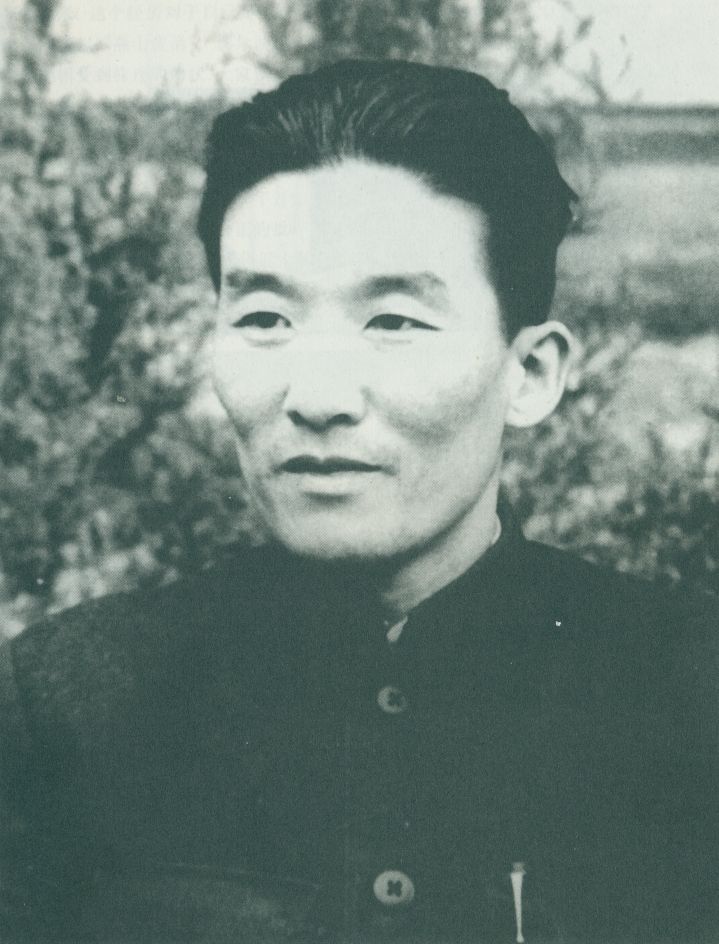
Deng Tuo
Mr. Deng Tuo is an older generation of proletarian revolutionaries and an outstanding journalist, political commentator, historian, poet and essayist. Deng Tuo's collection began during the war years. As a famous "pen holder", Deng Tuo wanted to collect and organize various materials for writing. His collecting career started from collecting and hoarding revolutionary historical documents, as well as Chairman Mao's poems and handwritings. At first, his collection was for the needs of revolutionary work, but over time, collecting became his pleasure in life. In 1959, he concurrently served as the leader of the leading group for the establishment of the National Museum of Chinese History (now the National Museum of China). In one period, ancient calligraphy and painting were scattered and lost seriously. Combined with their own literary and artistic qualities, ancient calligraphy and painting became the most important collection objects in his later years.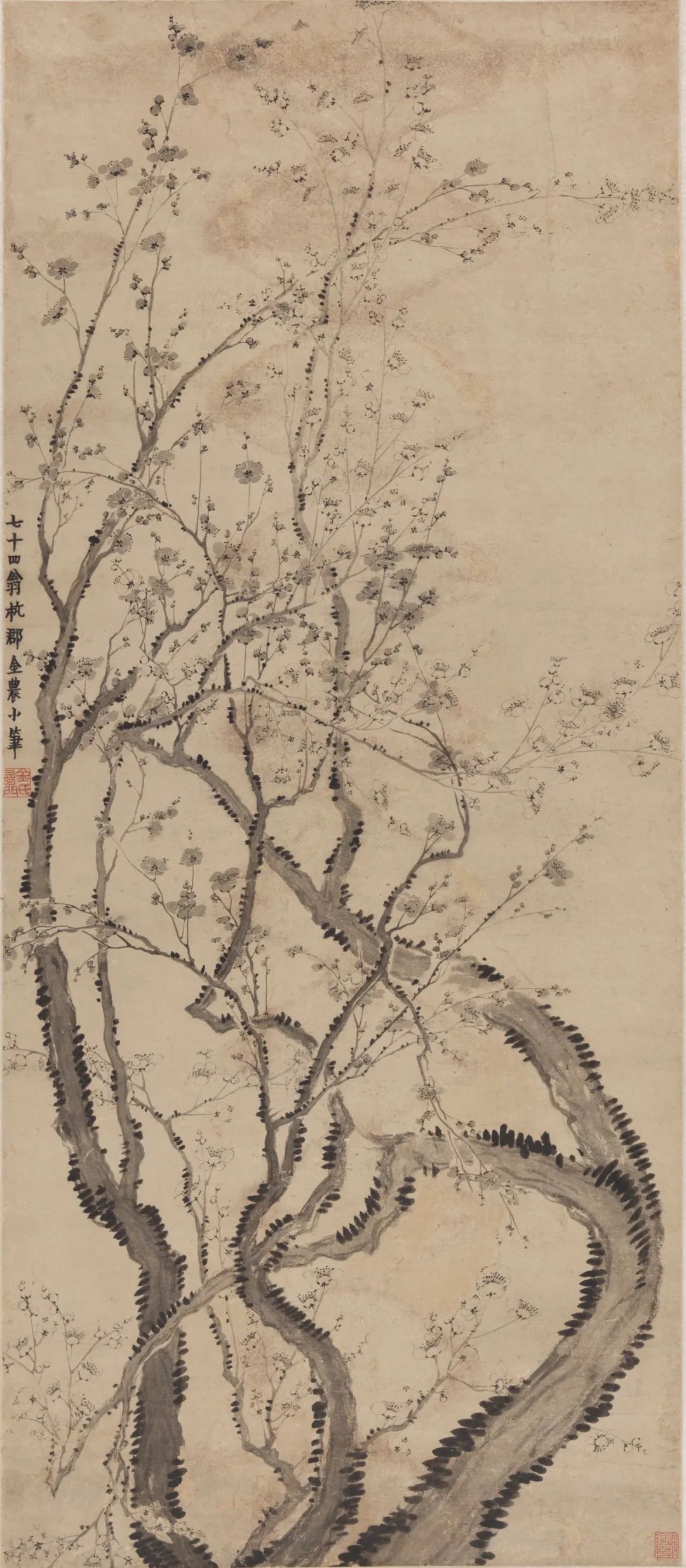
Qing Jinnong's "Double-color Plum Blossom"
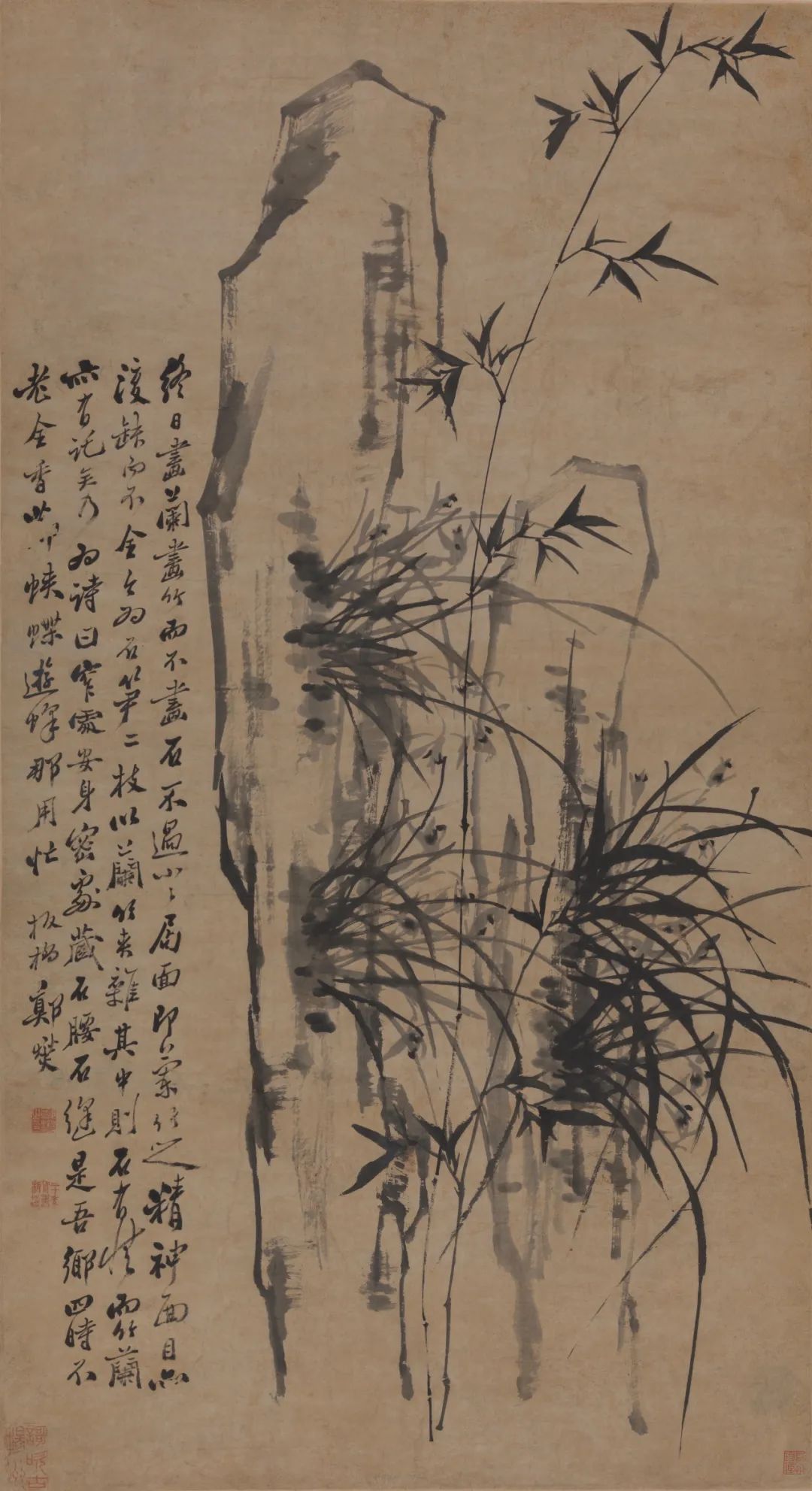
Qing Zheng Xie's "Orchid and Bamboo"
According to Yuhui's research, Deng Tuo's collection can be summed up in the following characteristics: First of all, he likes the works of Fujian painters, as long as he sees the works of Fujian painters, he will collect them. Because Deng Tuo is from Fujian, he has a hometown complex. In his collection, Fujian painters include Chen Rong from the Southern Song Dynasty, Wu Bin from the Ming Dynasty, Shangguan Zhou and Huang Shen from the Qing Dynasty, etc. If he adds two or three more, he will almost have collected all the famous painters in Fujian since the Song Dynasty. Secondly, he has a large collection of Ming Dynasty paintings. In the market at that time, the ratio of Ming Dynasty paintings to Qing Dynasty paintings was about 1:10. In his collection, the ratio of Ming Dynasty paintings to Qing Dynasty paintings was almost 4:6. When Deng Tuo encountered paintings from the Ming and Qing Dynasties, he gave priority to the works of the Ming Dynasty. Thirdly, Deng Tuo likes to collect the paintings of literati. He wants to communicate with intellectuals, and of course he will consider collecting more works of literati. The connotation of literati painting and calligraphy is much richer, and there are many places worthy of discussion. For example, he has almost collected all the paintings of the Wumen families, some of the Eight Eccentrics of Yangzhou, as well as Shi Tao and Bada.
Ming Shenzhou "Hemerocallis Sunflower Picture Scroll"

Ming Wen Zhengming's "Flying Springs with Stacked Peaks"
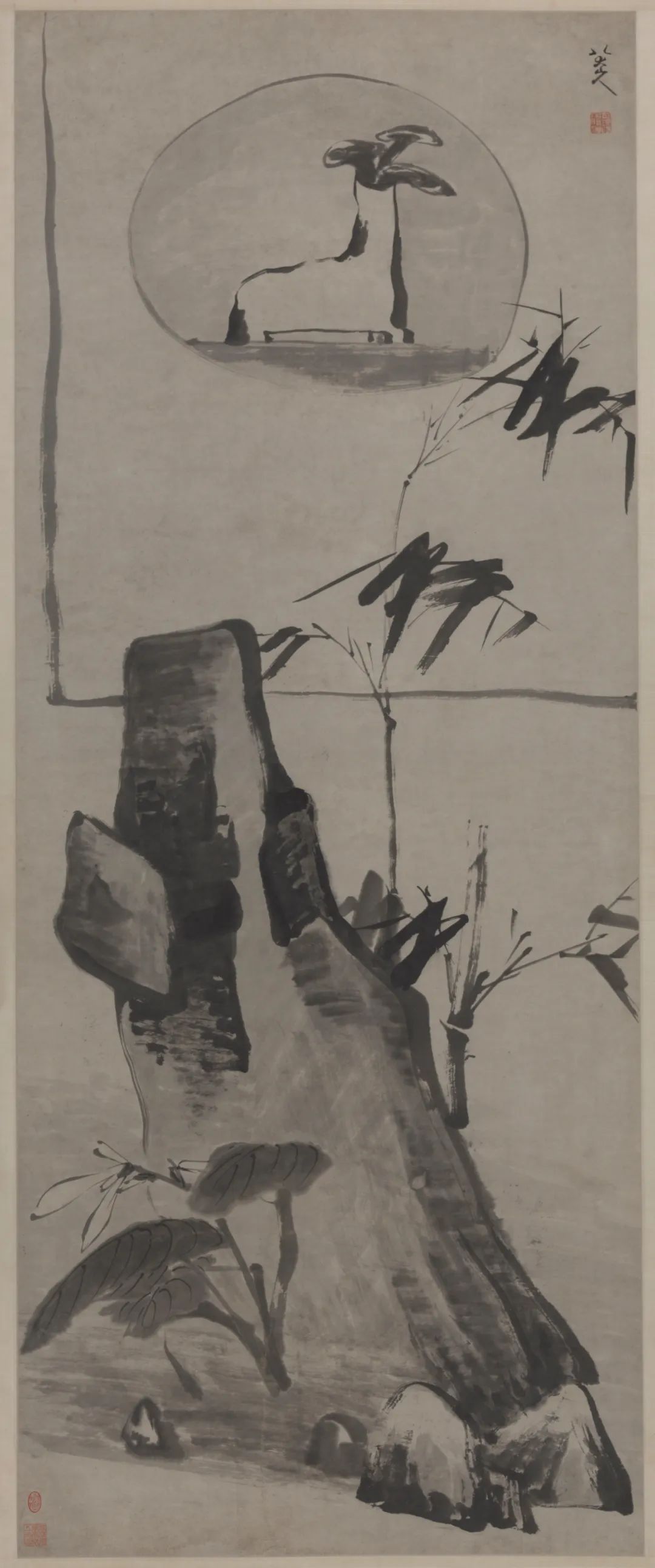
Qing Zhuda "Autumn Window Bamboo Rhyme"
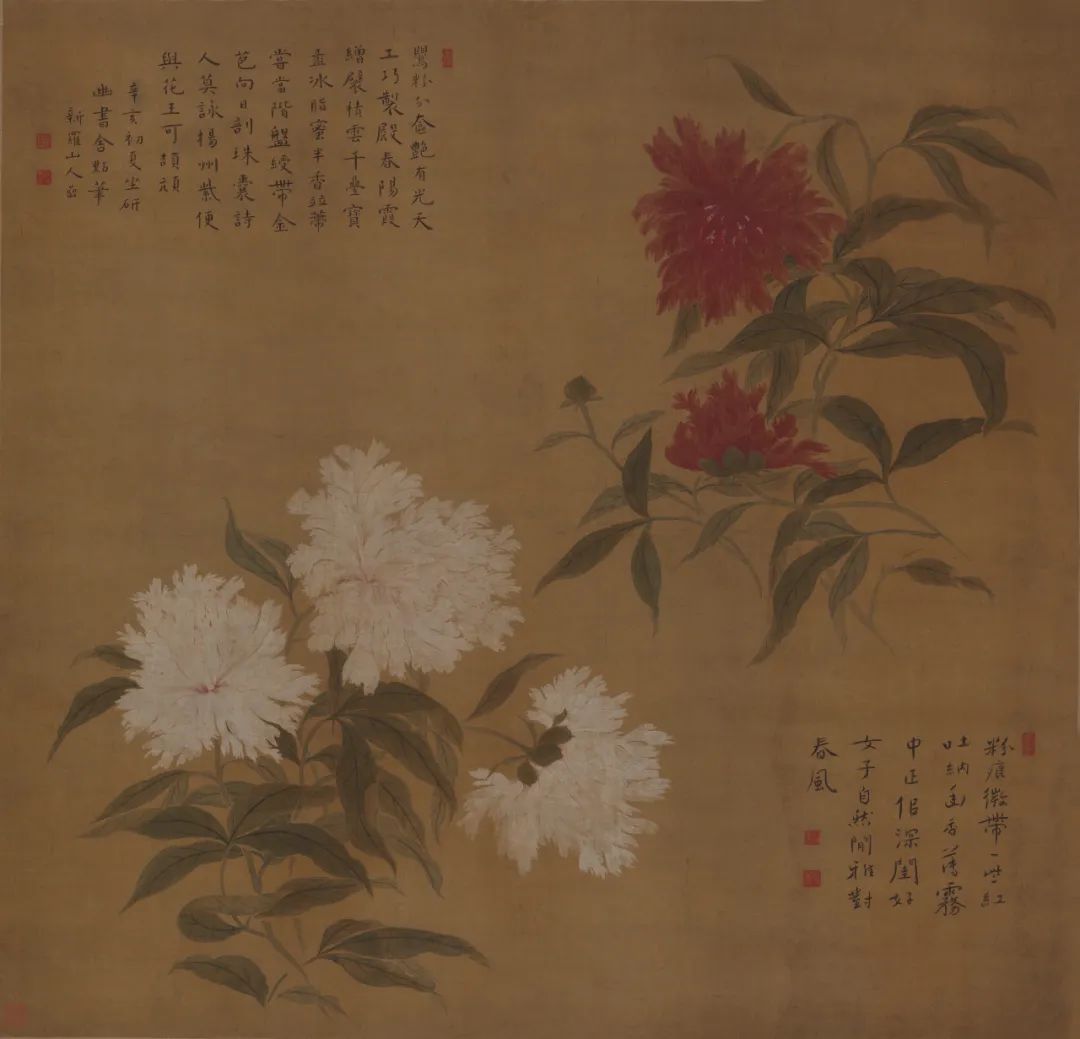
Tsinghuayan "Red and White Peony Map"
According to the research of scholar Sun Wei, Deng Tuo has about 500 pieces in his collection, 70% of which are ancient Chinese paintings and calligraphy. In 1964, Deng Tuo donated more than 140 pieces (sets) of fine works to the National Art Museum of China, such as "Cloud Dragon" by Chen Rong in Song Dynasty, "Cloud Mountain" by Gao Kegong in Yuan Dynasty, "Hemerocallis Sunflower Picture" by Shen Zhou of Ming Dynasty, Tang Yin "View of Lakes and Mountains", Lv Ji's "Peony Golden Pheasant", Qiu Ying's "Picture of Picking Zhi", Qing Dynasty Yun Shouping's "Osmanthus Three Rabbits", etc., as well as an important national treasure - Su Shi's "Xiaoxiang Bamboo and Stone Map". In addition to these, the 24 works that were picked up by Rong Baozhai in order to purchase Su Dongpo's "Bamboo and Stone in Xiaoxiang" were also collected by Deng Tuo.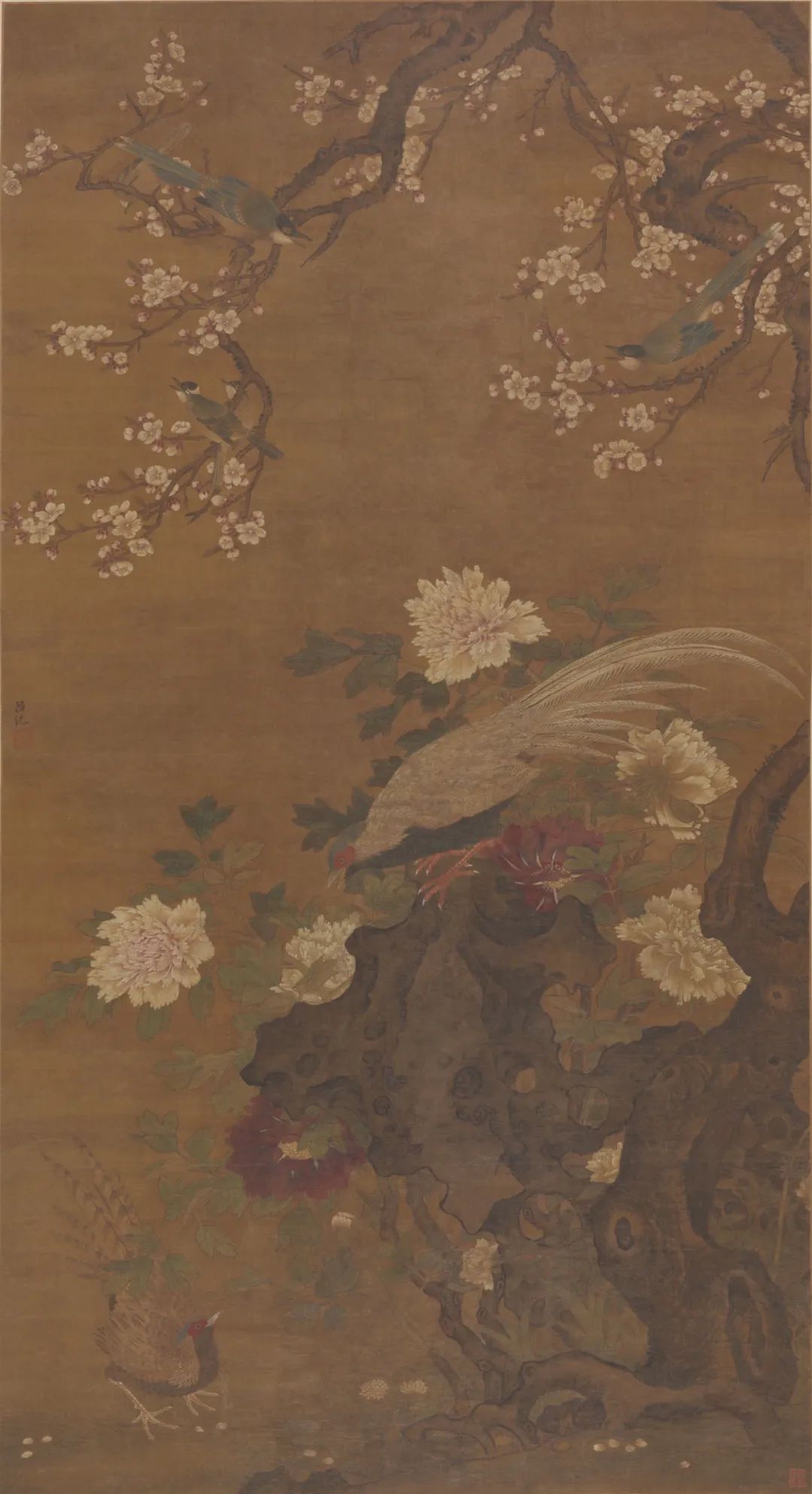
Ming Lu Ji "Peony and White Pheasant"

Ming Qiu Ying's "Picture of Caizhi"
Wu Weishan, member of the Standing Committee of the National Committee of the Chinese People's Political Consultative Conference, director of the National Art Museum of China, and vice chairman of the China Artists Association, believes that Deng Tuo's collections embody two distinct characteristics: one is historical. From the Song Dynasty to the late Qing Dynasty, it basically includes the important schools and painters in the history of painting, forming a relatively complete style pedigree and historical sequence; and this is exactly what he intended as a historian to complete the "History of Ancient Chinese Painting". the original intention. The second is cultural. From Su Dongpo, an advocate of literati painting, to the "Four Schools of Yuan Dynasty", "Wumen School of Painting", "Yangzhou School of Painting" and other literati groups, the diverse changes constitute a clue with literati painting as the main vein; In particular, emphasis is placed on the verification of character and style, and the connection between subject matter and cultural implication. In a nutshell, Mr. Deng Tuo's collection is a typical literati-scholar type, which combines collection, appreciation and appreciation. On the one hand, relying on his profound literary and historical accumulation and calligraphy skills, he cites and cites scriptures; on the other hand, he compares and analyzes style characteristics, brush and ink language, and even paper and silk materials; Appraisers Xie Zhiliu, Yang Renkai, etc. discussed and exchanged ideas, and they also "discussed the present" while "reviewing the past", and paid much attention to the development of contemporary Chinese painting.
Qing Wang Yuanqi "Imitating Huang Gongwang Landscape"
It is reported that since Deng Tuo's donation, the National Art Museum of China has made these ancient painting treasures play a huge cultural value. In 2012, on the occasion of the centenary of Deng Tuo's birth, after the works were fully restored by the National Art Museum of China, the "Special Exhibition of Treasures of Ancient Chinese Paintings Donated by Deng Tuo" was specially held. The high-quality works of art have appeared in various exhibitions more than ten times, allowing more audiences to appreciate these art treasures and share the cultural feast.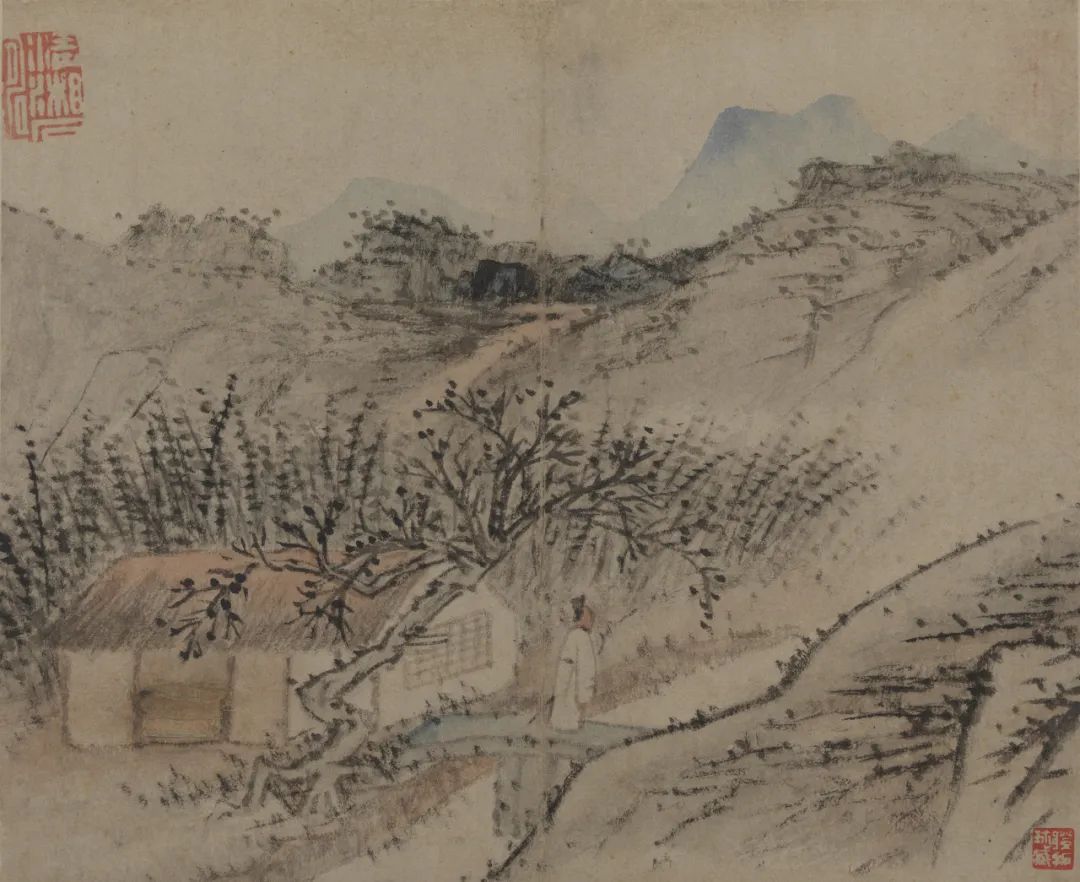
Qing Shitao Landscape (album 12 open)
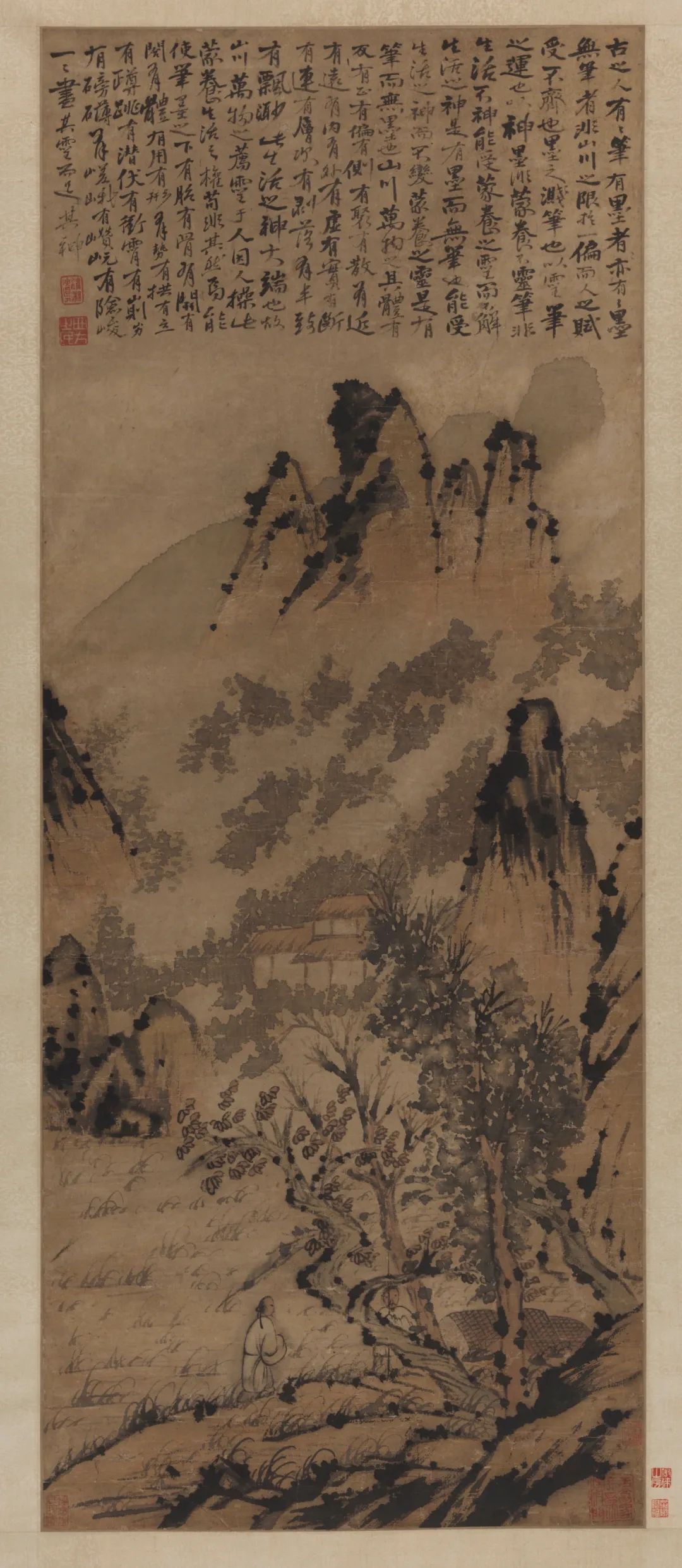
Qing Shitao's "Picture of Jiang Gan Visiting Friends"
The exhibition will also display precious photos, documents, books, etc. provided by Deng Tuo's family for the first time, showing Deng Tuo's elegant style. The exhibition also reproduces the preservation, research and publicity of these donated works by the National Art Museum of China over the years in the form of images. This exhibition is part of the National Art Museum of China's "Revitalization of Collections" series of exhibitions, which will last until July 15th.(This article is based on the WeChat public account of the National Art Museum of China, and also refers to the article "Deng Tuo's Painting Collection" by Yu Hui, a researcher at the Palace Museum)